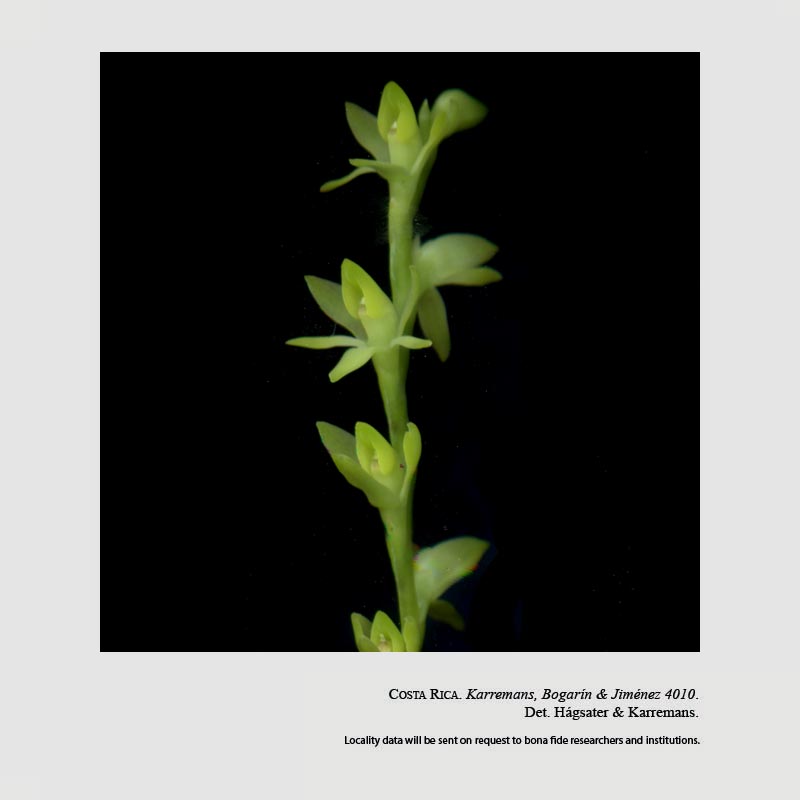

Epidendrum microanoglossum Hágsater & Karremans 2013 GROUP Neowilliamsia
Photo by © Karremans and The Epidendra Website
TYPE Drawing by © Jimenez, Hágsater & E.Santiago and The AMO Herbario Website


 LATER
LATER
Common Name The Small Anoglossum Epidendrum [refers to its diminutive similarity to E anoglossum]
Flower Size .6" [1.5 cm]
Found in Costa Rica and Panama in evergreen cloud forests at elevations around 2200 meters as a small sized, cold growing epiphyte with simple, arising from the lower internodes of the previous stem and carrying 3 to 7, along the apical 2/3 of the stem, alternate, articulate, coriaceous, erect-spreading, elliptic, obtuse, bilobed, minute dorsal keel, margin entire leaves that blooms in the later summer on a terminal, without a spathe, erect, occuring only once, racemose, distichous, laterally compressed, ancipitose, straight , 2 to 6" [5 to 15 cm] long, almost simultaneously 8 to 11 flowered inflorescence about half as long as the ovary, deltoid, acute, conduplicate, ancipitose floral bracts and carrying non-resupinate, distichous, sweetly fragrant flowers.
"Epidendrum microanoglossum belongs to the GROUP Neowilliamsia characterized by the ancipitose stems and rachis, the rachis with conduplicate, acute bracts, distichous, usually non-resupinate flowers, the lip often digitate and the 2 or 4 pollinia with 2 hard, laminar, caudicles. The species is recognized by its similarity with Epidendrum anoglossum but about half the size; shorter leaves .8 vs 1.6" [2 vs. 4 cm] long on average, shorter distance between flowers .2 vs .4" [5 mm vs. 10 mm], greenish flowers vs. yellowish, sepals and petals only partly spreading vs. very much spreading, even being retorse, a shorter and differently shaped petal, .18 vs .28" [4.5 mm long vs. 7 mm] long; wider near the apex vs. wider at the middle and, the shorter and differently shaped lip .18" vs .28" [4.5 mm vs. 7 mm]; ovate-rhombic vs. triangular. Epidendrum cymbiglossum Hágsater is also similar and its type specimen was collected on Cerro Pando as well; however, it is bifoliate vs. 3- to 7 leaved, has a much larger lip .68 vs .18" [17 mm vs. 4.5 mm] long, yellow vs. greenish flowers and with a long-trapezoid lip vs. ovate-rhombic." Hagsater etal 2013
Synonyms Epidendrum delicatissimum Rchb.f. 1876
References W3 Tropicos, Kew Monocot list , IPNI ; Icones Orchidacearum 14 Plate 1457 Hagsater 2013 drawing/photo fide;
--------------------------------------------------------------------------------------------------------------------------